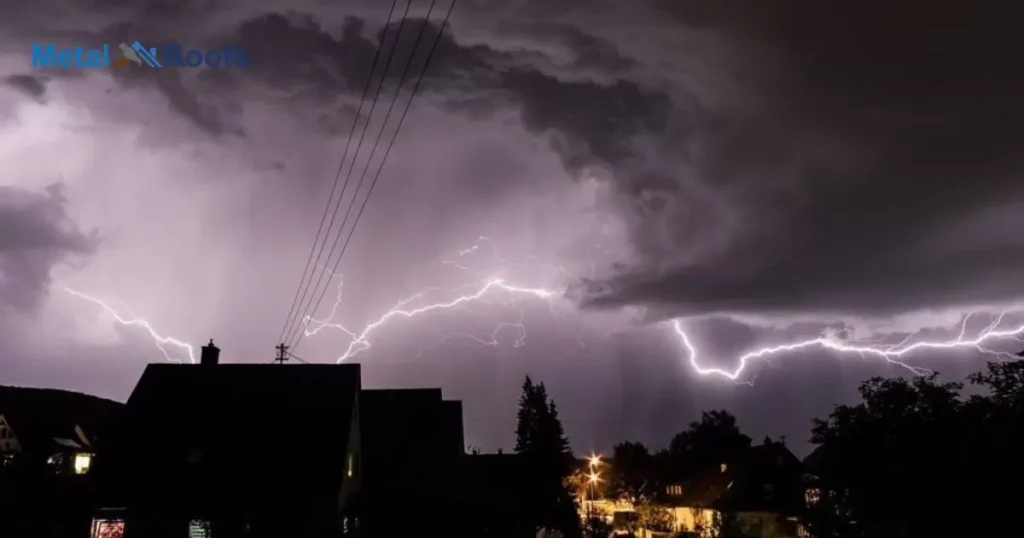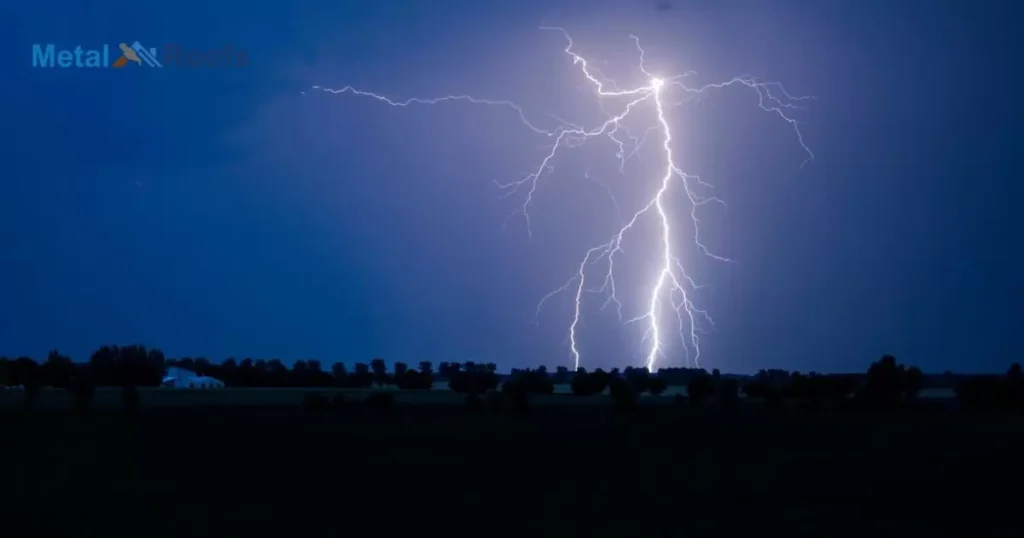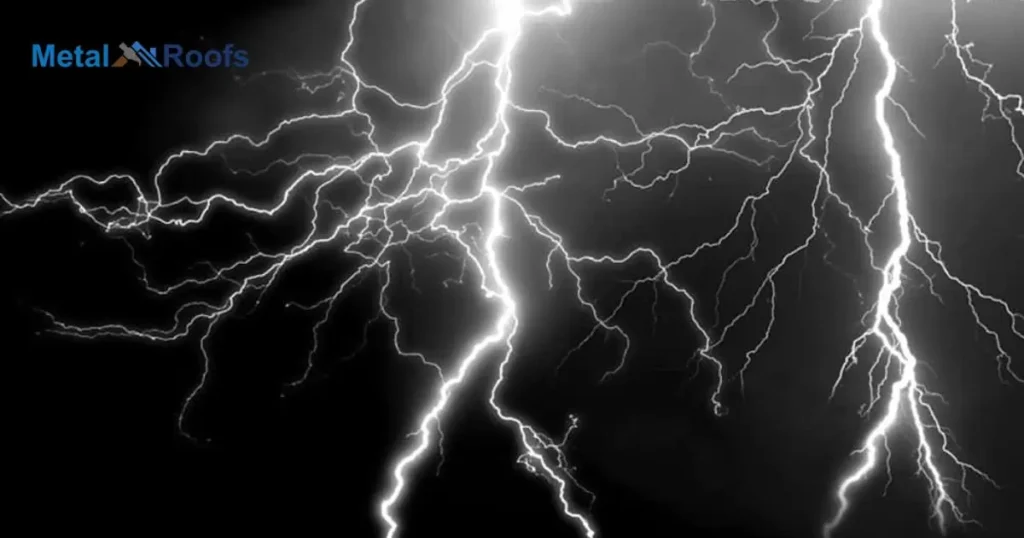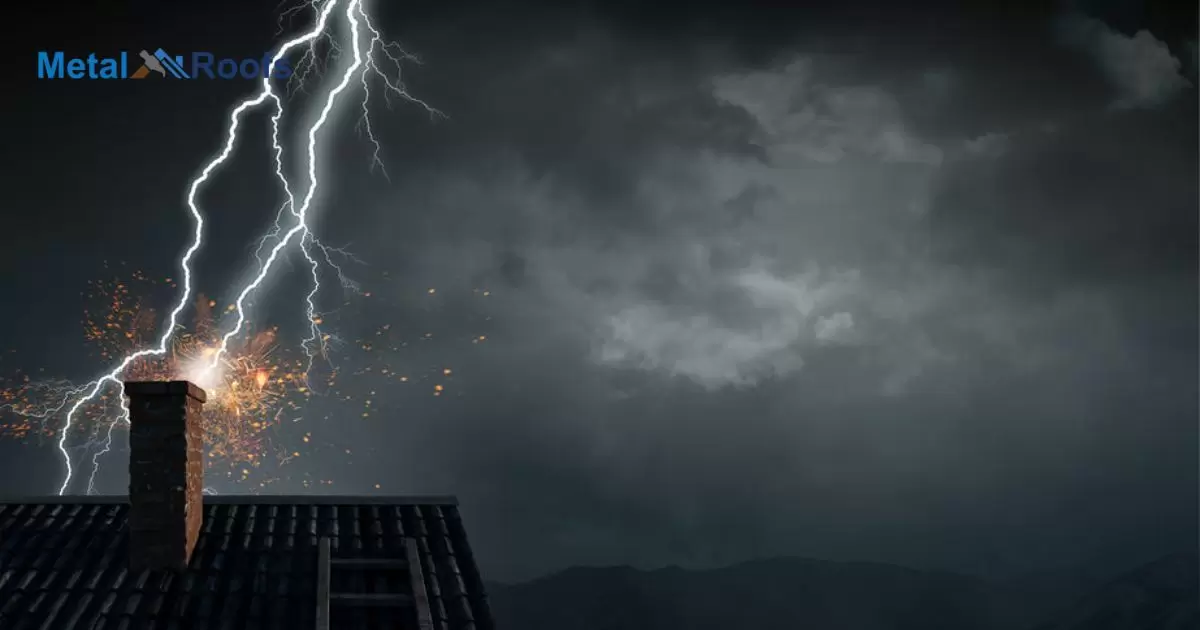Metal roofs are more likely to be struck by lightning because they are conductive. The metal allows electricity to flow through it easily, so lightning is drawn to metal roofs. Homeowners with metal roofs should install lightning rods to direct strikes safely into the ground.
Metal roofs attract lightning. The conductive metal allows electricity to flow through easily. Lightning is drawn to metal roofs. Homeowners ask, do metal roofs attract lightning? Yes, metal roofs are more likely to be struck by lightning than other roof types. Installing lightning rods helps direct strikes safely into the ground.
Metal roofs attract lightning more than other roof types. This happens because metal is highly conductive. When lightning strikes, electricity flows through metal easily. This makes metal roofs a target for lightning strikes. Homeowners with metal roofs should install lightning rods. The rods direct strikes safely into the ground.
Key Takeaways
- Metal roofs do not attract lightning but can conduct electricity if struck.
- Grounding a metal roof is essential to reduce the risk of damage during lightning strikes.
- Topography, including hills, valleys, and rivers, influences weather patterns and landscapes.
- Understanding topography is vital for urban planning, agriculture, and environmental management.
- Proper grounding and lightning protection systems are necessary for safety and to mitigate risks associated with metal roofs.
Are metal roofs lightning magnets?
Metal roofs aren’t magnets for lightning. Lightning is attracted to the highest point in an area, regardless of the material. Metal roofs conduct electricity if struck but aren’t more likely to be hit.
Factors like height and location matter more in attracting lightning. Grounding and protection systems can minimize damage from strikes. cupola on a metal roof Overall, metal roofs aren’t lightning magnets.
Lightning Attracted to Metal Roofs

Metal roofs don’t draw lightning but can conduct electricity if struck. Lightning targets the highest points, not just metal roofs. Factors like height and shape matter more. Grounding and protection systems can reduce risks. So, metal roofs aren’t lightning magnets.
Proper precautions help prevent damage from lightning strikes. Metal roofs are not inherently more dangerous. Lightning safety is about awareness and preparation. Understanding risks is key to safety. With care, metal roofs are safe choices for homes.
Lighting Protection Systems
Lightning protection systems are crucial for safeguarding buildings from the destructive force of lightning strikes. These systems consist of lightning rods, conductors, and grounding to divert lightning safely away from structures.
By providing a path for lightning to follow, these systems help prevent damage to roofs, electrical systems, and even fires. Properly installed and maintained lightning protection systems can offer peace of mind during storms.
What Happens To Metal When Struck By Lightning?
When lightning strikes metal, it heats it up instantly. The extreme heat can cause the metal to melt or vaporize. This rapid heating and cooling can create fractures or deformations in the metal.
Sometimes, the lightning strike can leave behind a pattern of branching or tree-like marks called Lichtenberg figures. These marks are formed when the lightning’s electric current travels across the surface of the metal.
Metal Roofing’s Relationship With Lightning

Metal roofing doesn’t attract lightning; it’s more about height and shape. Lightning tends to hit the highest point in an area. Metal roofs can conduct electricity if struck by lightning. But they don’t increase the chances of a strike.
Proper grounding and lightning protection systems help minimize damage. They’re crucial for any structure, regardless of the roofing material. So, while metal roofs can conduct electricity, they don’t draw lightning any more than other types of roofs.
Factors Influencing Lightning Strikes On Metal Roofs
| Factors | Influence |
| Height and Location | Tall structures in open areas are more susceptible to lightning strikes. Lightning tends to hit the highest point in an area. |
| Roof Shape and Design | Pointed or angular roofs may attract lightning more than flat or rounded ones. |
| Grounding and Protection | Proper grounding and lightning protection systems are essential to minimize the risk of damage from lightning strikes on metal roofs. |
When it comes to lightning strikes on metal roofs, several factors come into play. The height and location of the structure can influence the likelihood of a lightning strike. Tall buildings or structures in open areas are more susceptible.
The shape and design of the roof can also affect lightning strikes. Pointed or angular roofs may attract lightning more than flat or rounded ones. Proper grounding and lightning protection systems are essential to minimize the risk of damage from lightning strikes on metal roofs.
Material Properties And Performance
When it comes to material properties, understanding how different materials perform is crucial. For instance, metals conduct heat and electricity well, while plastics are often lightweight and resistant to corrosion.
Performance relies on how materials behave under various conditions. A metal roof, for example, might be durable and resistant to weathering, but it can also conduct electricity during a lightning strike.
Influences The Path Of The Lightning

Lightning’s path is influenced by various factors. The height of structures can attract lightning strikes. Tall objects like trees or buildings often serve as natural targets. Metal objects, including roofs, can conduct electricity if struck. Their shape and location also play a role. Lightning seeks the easiest path to the ground, guided by these factors.
The Height Of The Building
The height of the building impacts its vulnerability to lightning strikes. Taller buildings are more likely to attract lightning due to their elevation. Lightning tends to strike the highest point in an area. So, the taller the building, the higher the risk of being struck.
Topography
Topography is all about the land’s shape and features, like hills, valleys, and rivers. Every place has its own topography that influences things like weather and scenery. Knowing about topography helps with stuff like planning cities and farming.
Frequently Asked Questions
What are the disadvantages of a metal roof?
Metal roofs can be more expensive upfront compared to other roofing materials, and they can also be prone to denting if hit by large hail or debris.
Is metal resistant to lightning?
Metal is conductive, so it can conduct electricity if struck by lightning, but it’s not specifically attracted to lightning.
Should a metal roof be grounded?
Yes, a metal roof should be grounded to dissipate any electrical charge in the event of a lightning strike and reduce the risk of damage.
Conclusion
Metal roofs attract lightning more than other roof types. This is because metal is highly conductive. Electricity can flow through metal easily. So lightning is drawn to metal when striking a home’s roof. Homeowners with metal roofs should install lightning rods. The rods direct strikes safely into the ground instead of through the roof.
Metal allows electricity to flow easily, making metal roofs a target. Lightning rods help reduce risk. They direct strikes safely into the ground. Homeowners with metal roofs should install quality lightning rod systems. This keeps homes safer in electrical storms. Metal roofs attract lightning but precautions can reduce risks.











